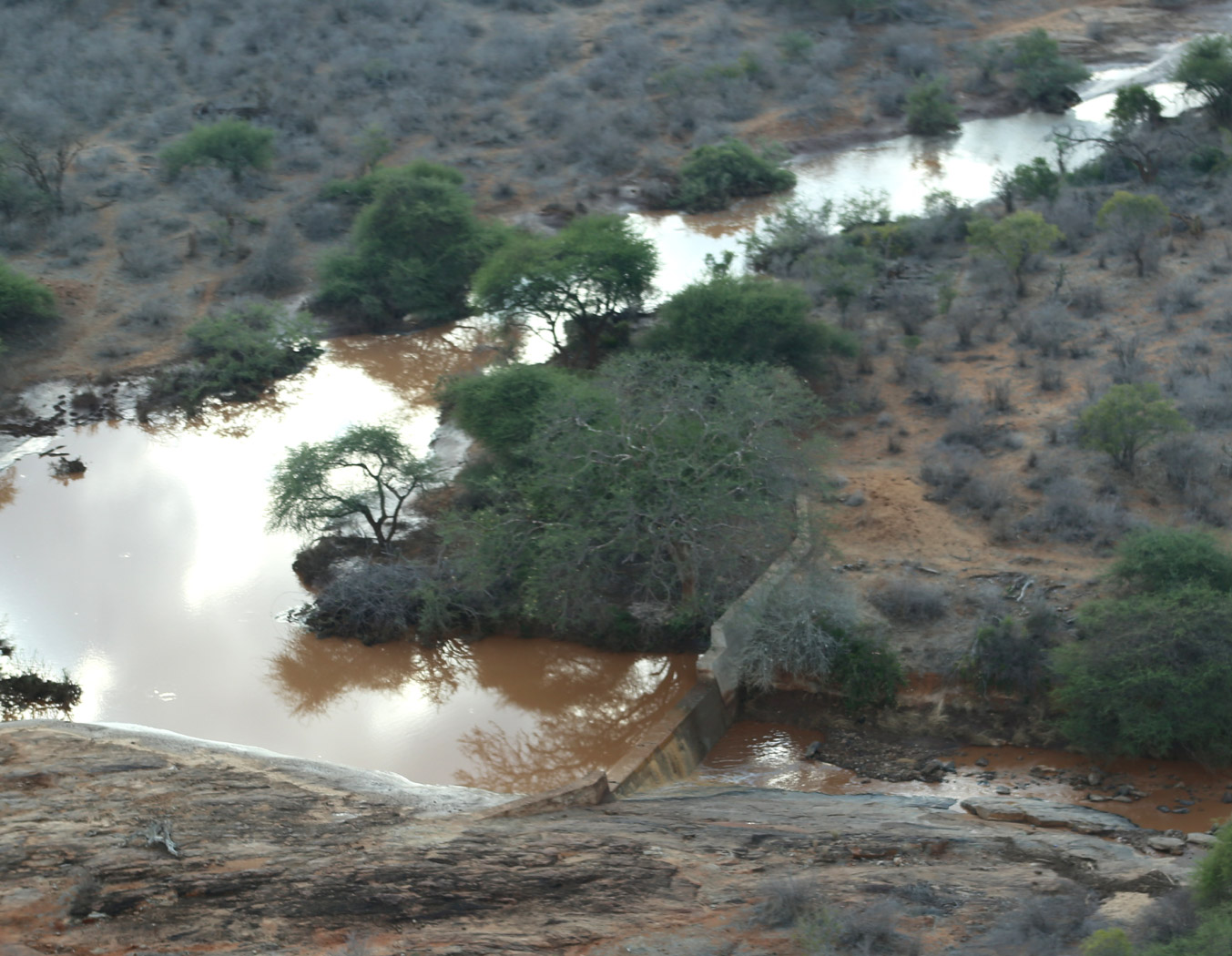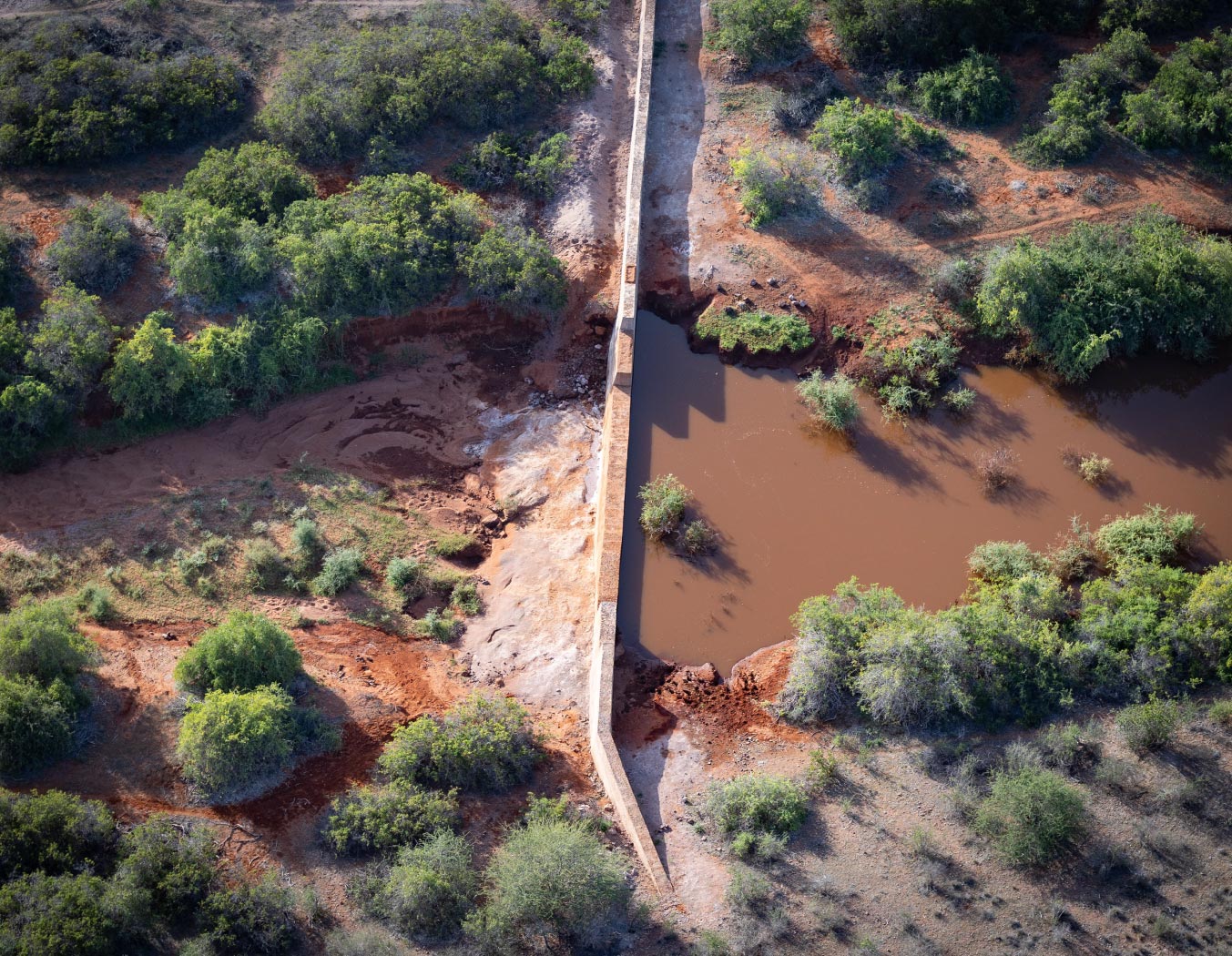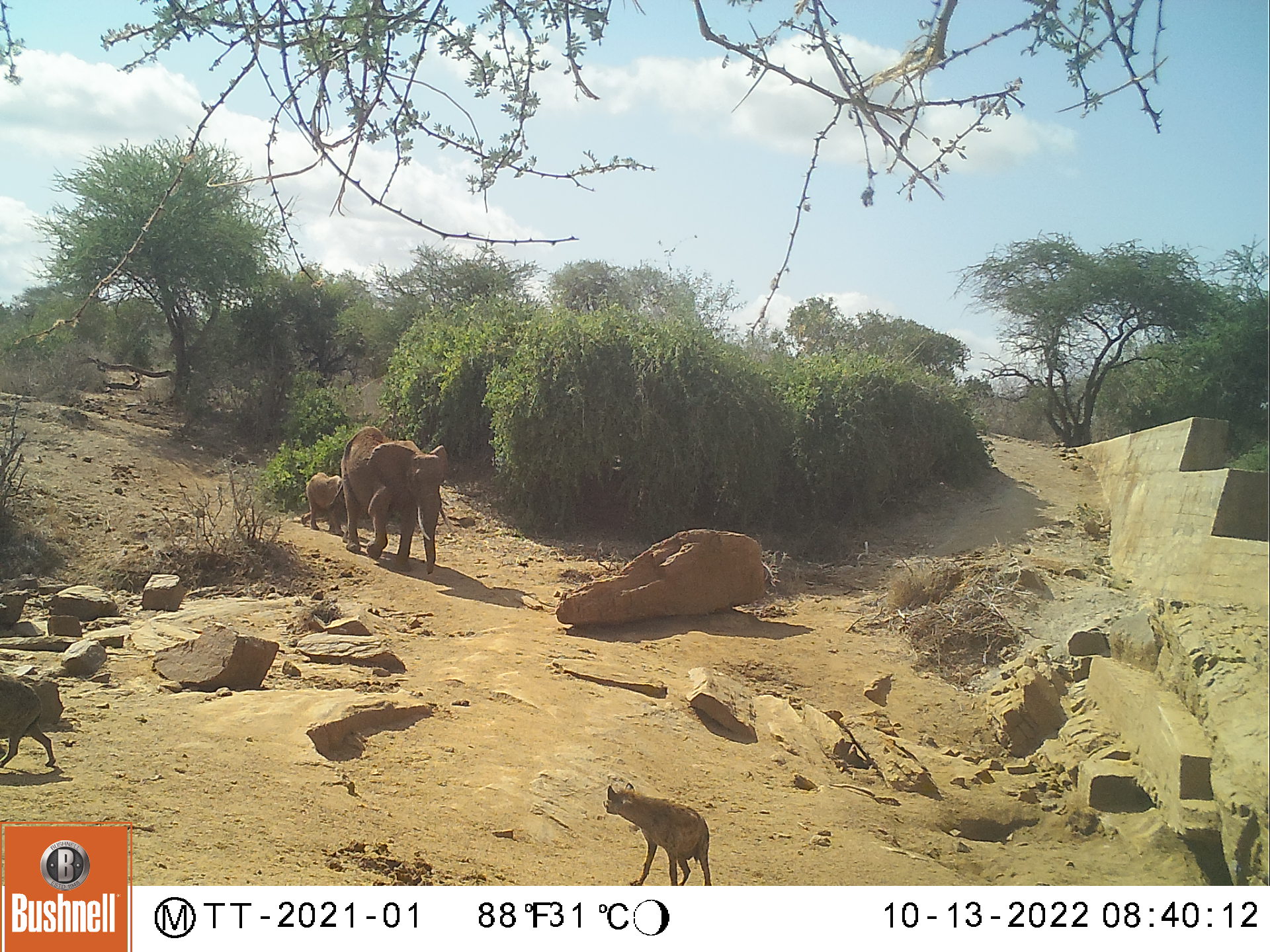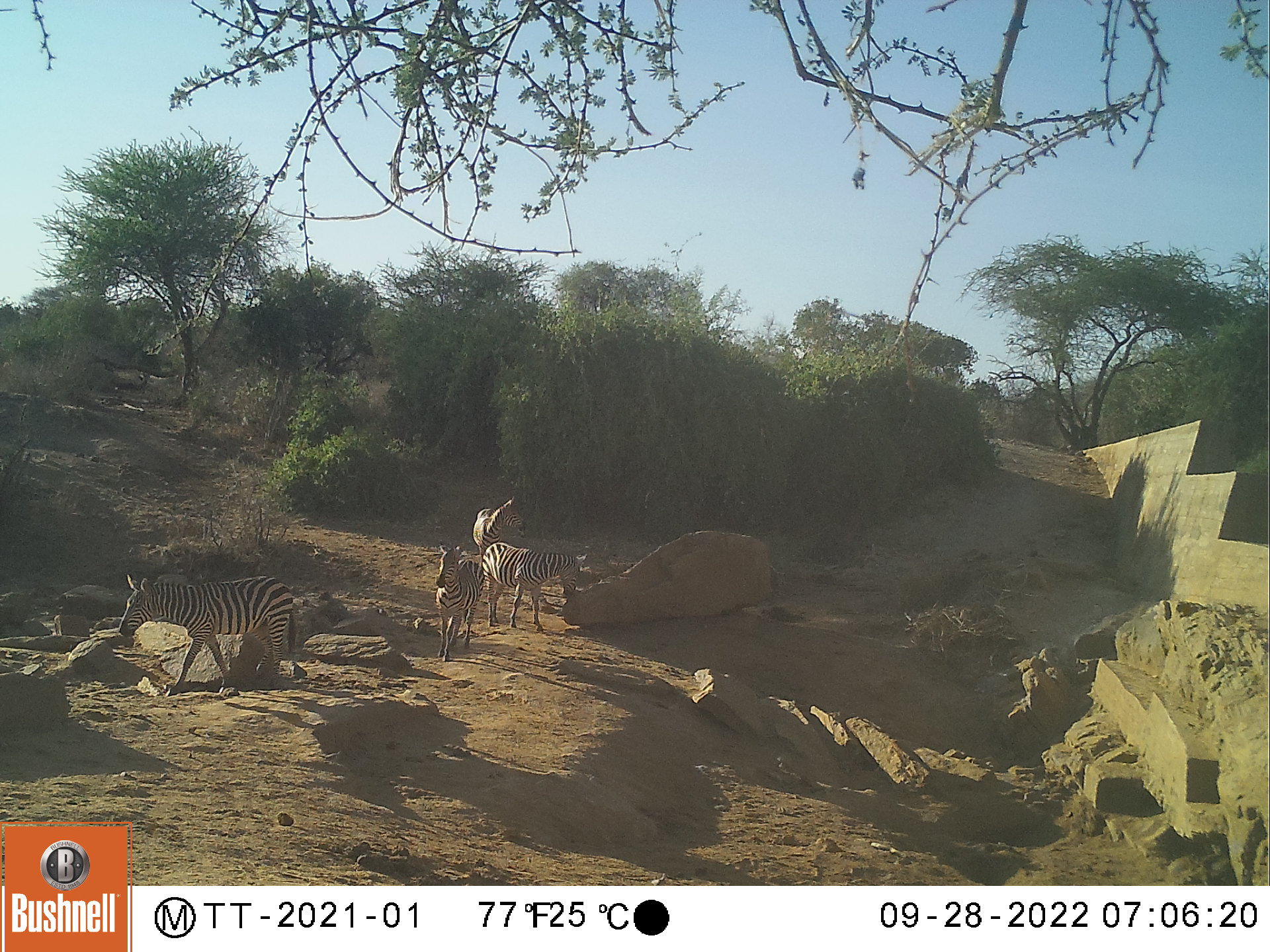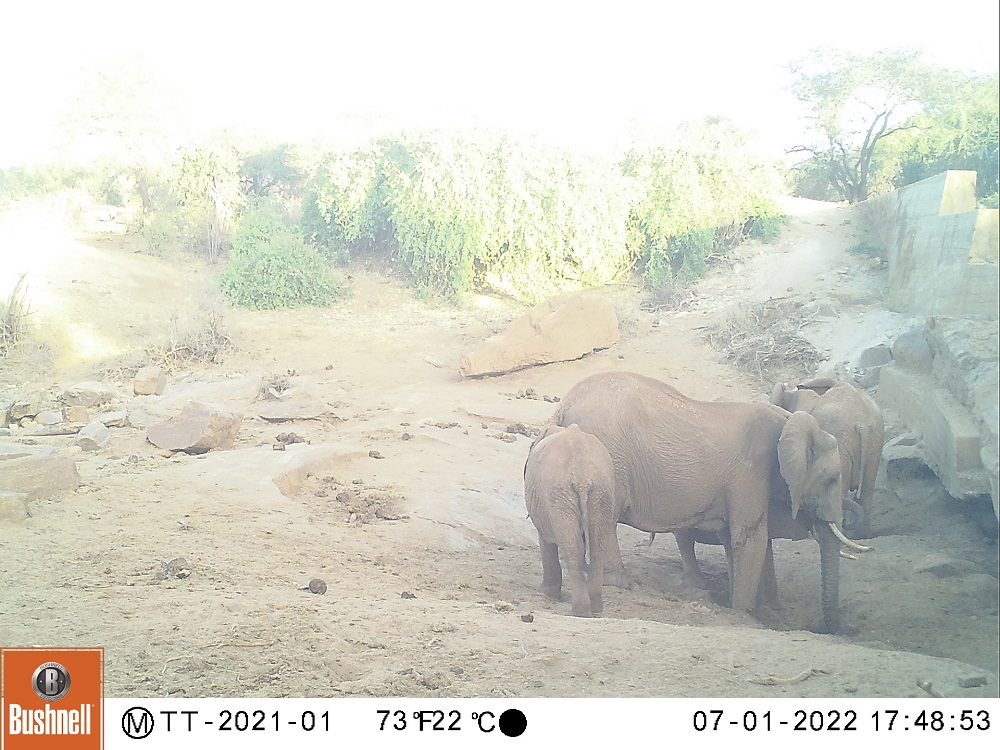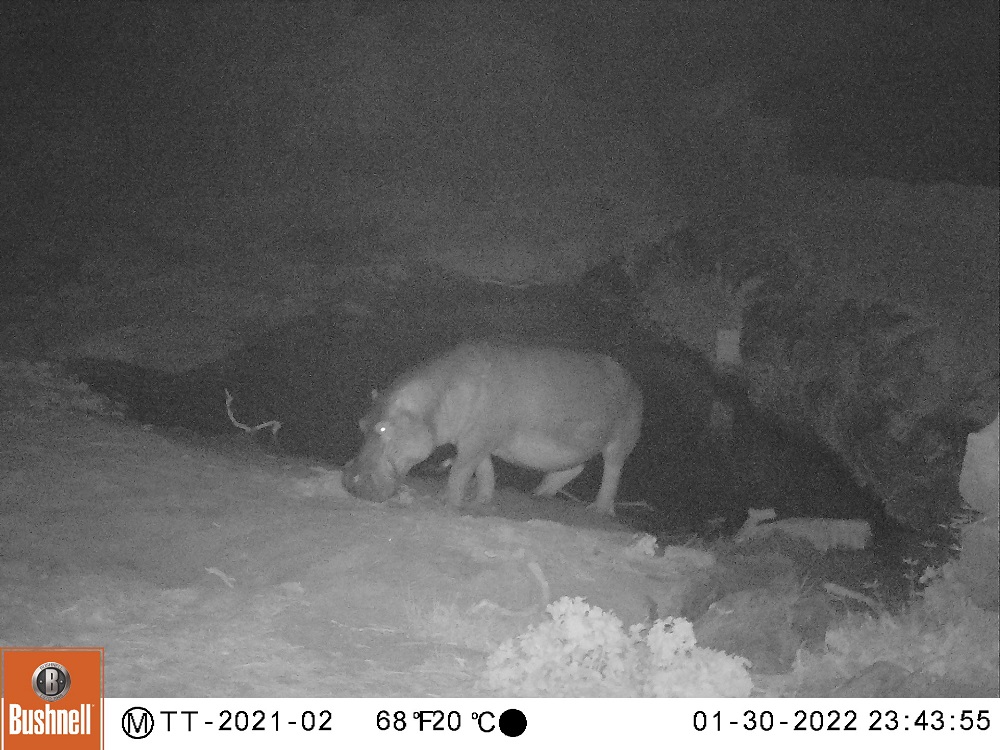What is a Sand Dam and how do they work?
Most drylands, much of Tsavo included, are not visited by rainfall for long periods of the year. When it does come, it falls quickly and heavily. So quickly, in fact, that the water often slides atop the surface of the earth. Often, it will wash away loose topsoil which is essential for new plant growth.
The water enters into established seasonal riverbeds and other waterways, quickly leaving the areas that need it and, eventually, entering permanent rivers.
Sand dams are very simple constructions often built of concrete. They aren’t designed to stop the water’s natural course, merely to slow it down. Here in Tsavo, we have initiated a pilot sand dam project with partners to directly benefit wildlife inside the Tsavo Parks and communities living adjacent to the Parks. We have constructed sand dams at various well identified locations within seasonal water courses and the positive successes after just one rainy season are clear to see.
When the rains come, the water, with silt and sand mixed in, meets with these dams and quickly builds up. The sand, which is heaviest, gets caught behind the barrier. A layer of sand builds upstream of the dam and, when that layer is tall enough, the water and silt simply flows over it and the dam wall, continuing on downstream as normal.
That layer of sand that has essentially filled the dam, however, remains when the rains leave. And within that thick blanket of sand, large quantities of water are trapped, protected from evaporation, filtered clean and kept for when is needed. The surrounding habitat of the sand dam significantly improves and creates better conditions for vegetation growth. Many and varying wild animals also dig into the sand to suck up water, elephants being the main ones. When they have had their fill of water, other wildlife come into take advantage of the “well dug by elephants”.
The sand dam concept is a well-known, tried and tested method of providing small but consistent amounts of water through a seepage system on the downside of the dam wall. This is ideal in arid areas and it does not create the “desertification effect” that is often associated with sinking of bore holes in Protected Area’s where elephant numbers are high. Upstream from the dam wall is filled with river sand when the seasonal riverbed flows during the rainy season. This sand filled dam acts as the sponge to hold significant water supplies that are then drip fed to wildlife.
Sand Dam Concept
Credit: Excellent Development https://www.excellentdevelopment.com/sand-dam-animation
Sand Dams in Tsavo
Sand dams have been used to great effect in dry arid regions for both humans and livestock. Tsavo Trust believes there is no reason why wildlife cannot reap the same benefits within wildlife conservation areas. Water supply and distribution for wildlife in the Tsavo’s has always been a huge challenge to address, particularly during the dry season due to erratic rain patterns and the sandy soils that cannot hold water for extended periods, unless they are well captured within water courses, such as through the sand dam idea.
In the last five years 2019 to 2023, Tsavo Trust, has constructed a total of 13 sand dams for wildlife in the Tsavo National Parks. 5 in Tsavo East and 8 in Tsavo West. All of these sand dams have already started the process of storing sand and water. Many of which reached full maturity following significant rains received in November and December 2023. Tsavo Trust continues to fund raise for this important project.
What have the benefits of the Sand Dam Project been?
1. Partners, including the Kenya Wildlife Service, have become increasingly dedicated to the project and its potential to provide year-round water to wildlife in the Tsavo Parks. Support for construction of additional sand dams is a priority.
2. Construction of the sand dams has created temporary employment for at least 30 local community members (for at least 7 months) coming from communities that border the Protected Area and during these major challenging times of Covid-19. Communities profiting directly from wildlife conservation activities is developing that “culture of conservation” that Tsavo Trust tries to instill at every level of operation.
What is planned now?
Over the next ten years and beyond, it is planned that at least 50 sand dams will be constructed at agreed sites following relevant approvals (KWS, National Environment Management Agency – NEMA, Environmental Impact Assessment – EIA, and Water Resources Management Authority – WRMA) on various well-suited seasonal water courses within Tsavo East NP and Tsavo West NP using the expertise of the African Sand Dam Foundation (ASDF) and the established field partnerships that Tsavo Trust brings to this project.
Tsavo Trust will continue to fund raise for this unique project alongside its partners; Sand Dams Worldwide (SDW), ASDF and KWS. Tsavo Trust acting as the field-based partner, will work alongside ASDF in the oversight, monitoring and management of each sand dam’s construction, as well as acting as the first point of contact between KWS and the SDW, ASDF team. Monitoring and evaluation of sand dams for wildlife will also be carried out by Tsavo Trust, KWS and ASDF. We genuinely believe this is an exciting and meaningful conservation project for the long term.



